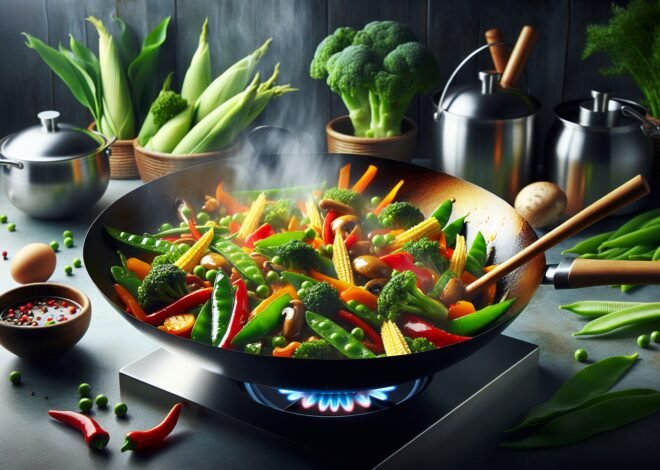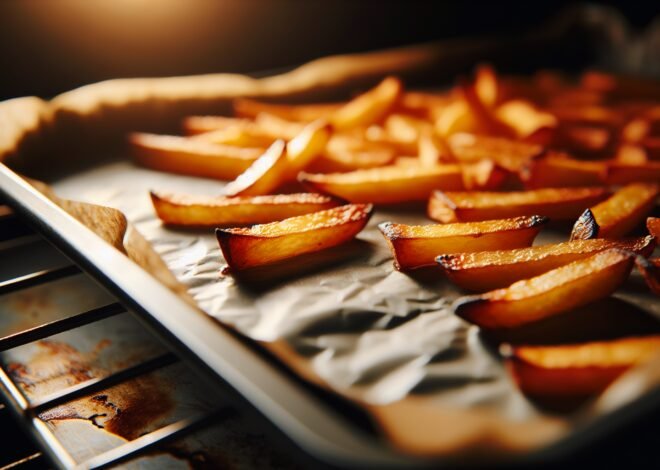
How to Use an Oven Thermometer to Ensure Accurate Temperature
Even the best ovens can have temperature fluctuations that affect your food. Using an oven thermometer ensures that your oven is exactly at the temperature you need. In this post, learn how an oven thermometer works and why it’s key for baking, roasting, and more.
Importance of an Oven Thermometer
Baking and cooking require precise temperature control to ensure delicious results. An oven thermometer becomes your ally in achieving consistent outcomes. Understanding its importance can significantly improve your cooking and baking experiences.
Detecting Temperature Inconsistencies
Ovens are notorious for fluctuating temperatures. Even the most reliable oven brands can exhibit discrepancies. A built-in thermometer might not reflect actual internal heat. An oven thermometer stands out as a reliable solution, detecting deviations and offering real-time readings. This detection allows you to adjust settings promptly, ensuring the correct cooking environment. Early detection of these inconsistencies prevents culinary disasters and promotes evenly cooked meals.
Avoiding Undercooking or Overcooking
Undercooked chicken or overdone cookies can ruin meals and dampen spirits. An oven thermometer helps avoid these pitfalls by providing accurate temperature readings. By knowing the exact heat level, you can adjust cooking times and temperatures accordingly. This precision ensures your dishes reach the desired doneness, maintaining both safety and flavor. Consistent use of an oven thermometer can refine your cooking techniques, leading to perfectly cooked meals every time.
Essential for Accurate Baking Results
Baking is a science, requiring exact temperatures for success. Cakes, breads, and pastries depend on specific heat levels to rise and bake properly. An oven thermometer provides the accuracy needed to meet these requirements. By ensuring your oven reaches and maintains the right temperature, you enhance texture and flavor profiles. This tool is indispensable for bakers striving for consistent and professional results. Accurate baking temperatures lead to impressive outcomes that delight both the eyes and taste buds.
Choosing the Right Thermometer
Selecting the appropriate oven thermometer involves understanding various types and features. This choice impacts the accuracy and effectiveness of your cooking and baking. A well-informed decision ensures you get the most out of this essential kitchen tool.
Analog vs. Digital Thermometers
Analog thermometers offer simplicity and durability, often preferred for their classic design. They feature a dial that displays temperature, making them easy to read. In contrast, digital thermometers are known for precision and speed, displaying exact temperatures on a digital screen. They often include additional features like alarms or timers. Choosing between analog and digital depends on personal preference and specific cooking needs. Consider your cooking habits and the level of precision required to make an informed choice.
Oven-Safe vs. Instant-Read
Thermometers also vary by their usage type. Oven-safe thermometers stay inside the oven throughout cooking, providing continuous monitoring. These are ideal for recipes requiring prolonged, consistent temperatures. Instant-read thermometers, on the other hand, are used for quick checks. They deliver precise readings within seconds but are not meant to remain in the oven. Each type offers distinct advantages, suiting different cooking styles and preferences. Evaluate your needs to determine which type aligns with your cooking practices.
Recommended Thermometer Brands
Several brands stand out for crafting reliable oven thermometers. Consider brands like **Taylor**, known for its range of both analog and digital options. **CDN** offers durable, accurate thermometers, with models that appeal to both amateur and professional cooks. **OXO** is favored for ergonomic designs and clear displays, making their thermometers user-friendly. Researching these brands can guide your purchase, ensuring a quality product that meets your requirements.
Using and Calibrating an Oven Thermometer
Once you’ve chosen the right thermometer, understanding its proper use enhances effectiveness. Calibration ensures accuracy, while correct placement avoids misleading readings. Using these tools correctly transforms your cooking precision and results.
Placement Inside the Oven
Proper placement of an oven thermometer is crucial for accurate readings. Position it near the center of the oven where heat distribution should be optimal. Avoid placing it near the oven walls or heating elements, as these areas can misrepresent the actual temperature. Consider using a clip or stand designed for thermometers to secure it in place. This strategic placement provides true insights into your oven’s internal climate, ensuring better cooking outcomes.
Checking Accuracy
Regularly checking your thermometer’s accuracy is vital. Perform a simple ice water test: immerse the thermometer in ice water and leave it for a few minutes. It should read 32°F (0°C). If not, calibration or replacement might be needed. Conducting these checks periodically ensures your thermometer remains a reliable kitchen tool. Maintaining accuracy guarantees that your culinary creations are cooked at precise temperatures, enhancing overall quality.
Calibrating Your Oven If Needed
If discrepancies persist, your oven might require calibration. Many ovens allow adjustments to align temperature readings with actual conditions. Refer to your oven’s manual for specific calibration instructions. This process ensures your oven operates at the intended heat level, alongside your trusty thermometer. Regular calibration fine-tunes your oven’s performance, supporting consistent cooking success.
Conclusion
An oven thermometer is a valuable tool for any kitchen, providing the accuracy you need for perfectly cooked meals. Even if your oven has a built-in thermometer, slight temperature inconsistencies are common, which can impact baking results. An oven thermometer helps you avoid overcooking or undercooking by showing the actual temperature, ensuring your food turns out as intended. This tool is especially useful for precision-based recipes, such as bread or pastries, where a small temperature discrepancy can make a big difference. Achieving perfect results is easier with the reliable accuracy of an oven thermometer at your disposal.
FAQ
How does an oven thermometer work?
An oven thermometer measures the temperature inside your oven, providing an accurate reading of the internal heat. It typically sits on a rack or hangs from one to gauge the air temperature, helping you adjust the oven settings for consistent cooking results.
Where should I place my oven thermometer?
Position the oven thermometer in the center of the middle rack for the most accurate reading. This placement ensures it captures the average temperature, reducing the impact of any hot or cold spots within the oven.
How accurate are built-in oven thermometers?
Built-in oven thermometers often have a margin of error, usually varying by up to 25 degrees Fahrenheit. For precise cooking, using a standalone oven thermometer can provide more reliable temperature readings.
What’s the best type of oven thermometer?
Digital oven thermometers offer quick and precise readings, while dial thermometers are durable and simple to use. Choose based on your preference for readability and speed of temperature assessment.
How do I calibrate my oven with a thermometer?
To calibrate your oven, set it to a specific temperature, place the thermometer inside, and wait for it to stabilize. Compare the thermometer’s reading with the oven’s setting. Adjust the oven’s temperature settings if needed to achieve accurate readings.
Do oven thermometers work in all ovens?
Oven thermometers function in most ovens, including gas, electric, and convection models. They provide a valuable tool for ensuring accurate cooking temperatures across various oven types.











